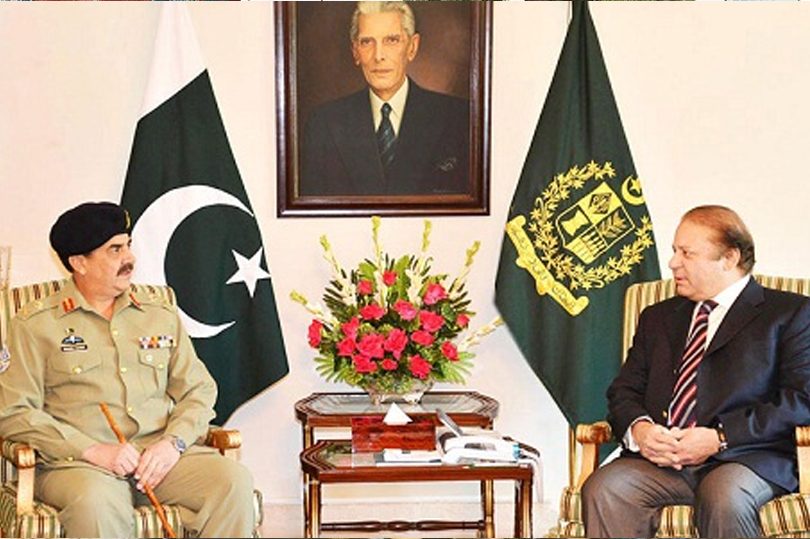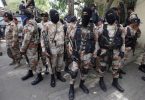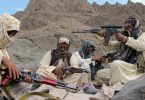Introduction
The increasingly cataclysmic ripples of terrorism urge a stronger and more cohesive civil-military response in Pakistan, both at provincial and national levels, a civilian-integrated military strategy to counter militancy may be viewed not only as critically significant in bringing life and direction to counter-terrorism efforts but in bolstering national defense and strengthening the holistic civil-military ties. This is a positive aspect since the dynamism of civil-military relations will be reinvigorated and revisited, promising golden opportunities for Pakistan to assert its supremacy over militants.
A Civil-Military Approach to Counter Terrorism
The threat to Pakistan remains complex and ambiguous, pushing the country towards the state where conflict is a norm while a stable peace, an exception. The minds of terrorists are creative, continually developing and executing new strategies to exploit government’s and military’s weaknesses. Although, Pakistan army has spearheaded crucial advances in preparation, planning and training in support of counter-terrorism operations, there remains a pragmatic necessity and vital opportunity for greater synergy between the Pakistan armed forces and the federal government.
Few will doubt that today Pakistan is certainly more prepared to grapple with any crisis situation or terrorism episode than it was a decade ago. However, it is crucial to pinpoint that the crest of our achievements should not be measured in the ability to temper the crisis, how quickly the intelligence agencies can identify the militant group responsible for the terrorist action or how efficiently the mess is cleaned up and normalcy of life restored in the aftermath. These actions, although extremely necessary and invaluable after the attack, need to stop representing the bar of success for counter-terrorism efforts. After more than a decade of fighting and struggle against terrorism, with countless sacrifices and amidst some critical battlefield victories, real success for Pakistan needs to be measured by the ‘prevention’ of a terrorist attack.
In all fairness, while prevention is the optimum outcome of counter-terrorism efforts, it is also the most difficult to achieve. Pakistan must identify the terrorist network or group that poses the gravest of threats to its citizens. Such strategies are complex and chaotic, deeply entangled in our constitution, federal government directives, and provincial injunctions as well as public opinion. Across the world, counterterrorism efforts have forced the terrorists to evolve their thought and mutate their ways of attack. More alarmingly, rather than one militant hegemon, such as Al-Qaeda and Taliban, today, we face various extremist factions and offshoots which combine to form a transnational movement of terrorist organizations and individuals. While some have provincial agendas, others are more ambitious in thought and brazen in their attacks against the army and national government. Terrorism today has many faces, including secessionist insurgency, sectarian conflict, and ethnic turf wars to name a few.
As such, subliming militants and preventing attacks is convoluted as well as resource consuming and requires closer cooperation between security and government agencies, bolstering civil-military efforts in this cause. The alarming escalation in mega-urban centers has increased the need for civilian law enforcement agencies to back up the military in curtailing the endemic terrorism. The Pakistan Police Force, in particular, have found themselves on the front lines in the battle against criminal groups. Karachi was once a hub of all economic activities of Pakistan due to its strategically located dry sea port, the Bin Qasim Sea Port, whereas it also served as a gateway to the international trade into the Central Asian region. However, in 2013, 166 Karachi police officers perished in violence attributed to terrorism while in the first half of 2014, 87 were killed. Such deaths make Karachi a microcosm of the problems the entire country faces.
A 2014 study by Rand Corporation titled, “A Strategic Planning Approach: Defining Alternative Counterterrorism Strategies as an Illustration”, defines ‘prevention’ as relevant to not only the operational phase of a terrorist attack but also encompassing “attempts to attack” including precursor activities such as recruiting, planning and material acquisition. It is the latter understanding of the definition where consolidated civil-military endeavors may prove to be the most influential.
The Rand model further introduces an intriguing use of ‘strategic planning’ against terrorism. First used effectively by the Americans in the Cold War, this ploy has also been used by the US against Al-Qaeda and is particularly potent to contain adversaries’ expansionist tendencies. As earlier mentioned, realistically, an all-out prevention of terrorism in Pakistan at the outset is hard to imagine. However, the definition of ‘prevention’ may be kept flexible. At the start of fresh civil-military counter-terrorism operations, ‘prevention’ may translate into thwarting and inhibiting psychologically significant attacks involving hundreds of casualties. A few years into the operation, ‘prevention’ may now include halting attacks involving tens of casualties. In other words, strategic planning accommodates for circumstantial bottlenecks and allows for more versatile civil-military counter-terrorism efforts.
Improved civil-military efforts may lessen the internal security burden on the military as well. The Pakistan armed forces, particularly the Special Services Group (SSG) commandos, possess exorbitant talent and capability in counter-terrorism operations, acquiring the knack to eliminate threats in a crisis swiftly, a feature that has been demonstrated repeatedly, be it air-force bases, army garrisons, schools or public centers under attack. With muted and at times, unenthusiastic cooperation between the military and civil government, this talent is not being shared with civilian law enforcement. The SSG have the ability and capacity to provide invaluable counter-terrorism and quick reactionary training to municipal and regional authorities to reduce the latter’s vulnerability to terrorist attacks. The local law enforcement planners will be able to hone their operation tactics, refine counterterrorism procedures and most importantly, learn to comprehend and attack the enemy’s strategy. More crucial than shortfalls in facilities and equipment is that civil law enforcement remains focused on their traditional roles of law and order. They have not accepted countering terrorism as part of their mission, particularly in rural and tribal areas, which is why military cooperation will be even more critical in expanding civilian counter-terrorism.
Additionally, civil agencies such as police and the Federal Investigation Agency (FIA) are established specifically for internal security. Consequently, the police in particular is spread throughout the country, often being the only source of law enforcement at the lowest level: a police Station House Officer (SHO) generally tends to be quite well informed of the households/neighborhoods under his jurisdiction. The current nature of terrorism is such that the attacks are often planned and executed internally. Therefore, enhanced civil-military engagements can tap into the local civil agencies’ experience and information regarding the particular area.
A study by Feridun and Shahbaz (2010) posits that military measures alone are not sufficient. Social, political and economic measures on behalf of the civil society are decisive in the fight against terrorism. While this may be a hotly debatable issue, such examinations do present evidence that a combined civil-military effort serves at the minimum to restrain, if not curtail, terrorist activities. Further evidence in existing literature invigorates this school of thought. Brophy-Baermann and Conybeare (1994); Cauley and Im (1988); Enders and Sandler, (1993, 2002); Landes (1978); Sandler (2005); Silke (2005); Omand (2005); and Lum et al. (2006), all present evidence in favor of the civil-military hypothesis. Interestingly, such studies have also incorporated a cross country frame, with the US and Turkey amongst such countries where combined civil-military anti-terrorism efforts are indispensable to achieve the desired results. In particular, civil measures can aid the military to address political, economic, diplomatic and social aspects of the fight against terrorism.
Furthermore, with coalition forces and the Pakistan army having successfully disposed of the extremist outfits’ leadership, the impact of terrorism changes focus from high-level military and government targets to ordinary civilians. This is in line with findings of a 2015 study by Max Abrahams and Phillip Potter, which presented evidence that certain types of militant groups, especially those suffering from leadership deficits, are more likely to attack civilians. Abrahams and Potter essentially argued that leadership deficits and struggles promote civilian targeting because the incentives of militants to perpetrate indiscriminate violence are inversely related to their position within the terrorist organizational hierarchy. Consequently, terrorist networks fraught with fragile leadership control or headed by figures controversial within their own ranks gravitate to terrorism because tactical decisions are delegated to lower-level members with stronger incentives to harm civilians.
While Abrahams and Potter presented evidence for a diverse set of terrorist organizations including North African and Middle Eastern terrorist outfits, the Taliban and Al-Qaeda, and the Al-Aqsa Martyrs Brigade, their argument may yet still have to ward off critics. However, I only employ their study to demonstrate the increased possible role of the civil agencies against terrorism. With recent intelligence reports implying frequent friction amongst Taliban leaders and the emergence of splinter groups, especially after the death of Mullah Omar & Mullah Mansour and the nomination of Mullah Haibatullah as the new Taliban chief, civil law enforcement may prove to be an invaluable asset for the Pakistan military to shield civilians from possible disenfranchised offshoots such as those led by Mullah Mohammad Rasoul and Omar Khorasani who are out to prove their strength and weight.
Conclusion & Recommendations
Contemporary terrorism is commonly seen as a framework of rapid change, immense complexity and genuine uncertainties. In particular, uncertainty is an underlying characteristic of Pakistan, generating fears and jitters that need to be addressed and mitigated by the government and armed forces alike. Europol has described the terrorist threat across Europe as “acute and diverse”. Unfortunately, this expression neatly fits Pakistan’s case as well.
Not tapping into local civil law enforcement formally will deprive Pakistan of potentially its most valuable instrument in controlling terrorism and disciplining militants. At the same time, to maximize the effectiveness of joint civil-military operations, the civil bodies must realize the importance of working with the armed forces while also adopting a citizen-oriented approach to policing. Perhaps the greatest advantage of such an approach is that it draws upon relationships and attitudes instead of heavy investment in advanced technical skills or weaponry. The key is that all civil officers have a well-defined and clear-cut role against insurgency, terrorism, and militant crime, which has not yet been specifically prescribed as part of their job description. Counter-terrorism awareness, intelligence and information collection on terrorist networks, and the arrest of terrorist suspects should be integrated into the civil agencies’ duties. The military could assist in developing and institutionalizing fresh Standard Operation Procedures (SOPs) that revisit priorities and sensitize officers to be aware of terrorist-related behavior they encounter in conducting their regular duties. With the contemporary security situation and militant threat, anti-terrorism operations are a critical national priority.
The International Crisis Group, in its 2014 report titled “Policing Urban Violence in
Pakistan”, concluded that joint civil-military endeavors stand to boost counter-terrorism. The report further highlighted that provincial civil law enforcement such as the police should be the primary agents in controlling terrorist, sectarian, and insurgent violence. The army can sensitize civilian policing units to be aware of suspicious activities or individuals. A two-way channel between the civil-military counterparts can be established to collect and exchange information on suspect groups to collate polished intelligence.
Likewise, civil-military efforts can prove to be cogent in alleviating police professionalism, complemented through amended SOPs and training for responding to crisis. An interview with a Police Service of Pakistan (PSP) officer revealed the significance of upgraded training. The officer recounted how he overcame his immediate fear right after a car bomb-blast and rushed to the venue only to realize he had no idea what he should do. Another PSP officer reported the immediate positive dividends of what a mere one-week counter-terrorism training course delivered: after the course, one of his trainees discovered through a restaurant owner that a man bought ten meals every day for a house which appeared deserted. The PSP trainee investigated and uncovered a terrorist cell operating in the house.
More critically, even reviewing the basics illustrates the significance and payoffs from engaging government bodies such as the police, Federal Investigation Agency (FIA), Airport Security Force (ASF) or even the Anti-Narcotics Force (ANF). Increasingly in Pakistan, kidnapping for ransom and narcotics trafficking is being uncovered to be a significant source of Taliban funding. Such criminal acts lie within the domain of these government bodies. With closer cooperation and sharing of tasks, the armed forces stand to benefit in the struggle against terrorism. Furthermore, civilian agencies normally enjoy a pervasive and well-integrated presence within the local community and are the traditional repository of historical information about regional conditions and criminal networks.
A joint civil-military counter-terrorism approach is poised to deliver rich dividends to an increasingly menacing and cancerous predicament. The same strategy will also advance empowerment reforms for Pakistan’s civil law enforcement agencies to protect civilians from militant violence. Therefore, the traditional keepers of law serving to increase security for the general public and actively battling terrorists will have positive psychological consequences in the Pakistan society.







